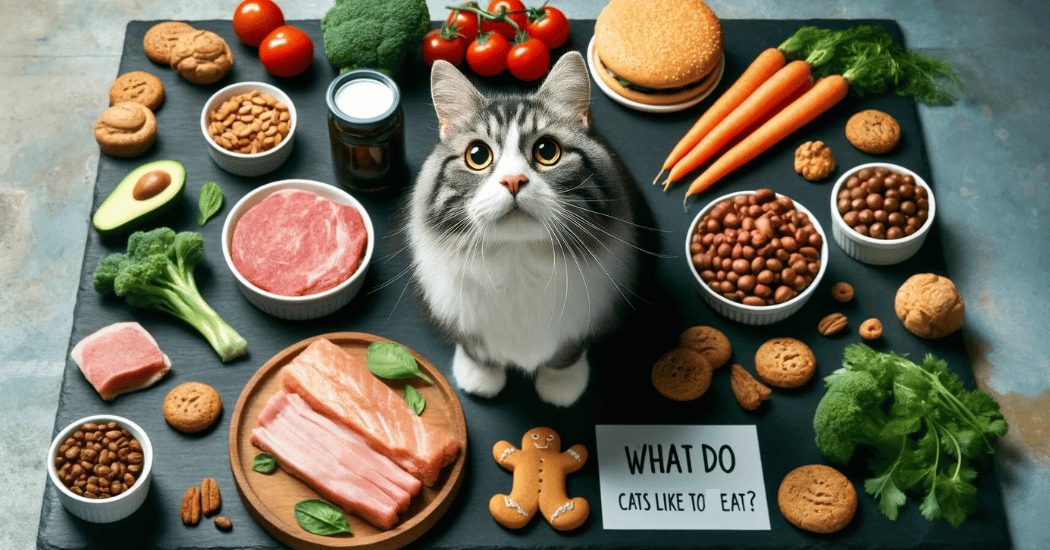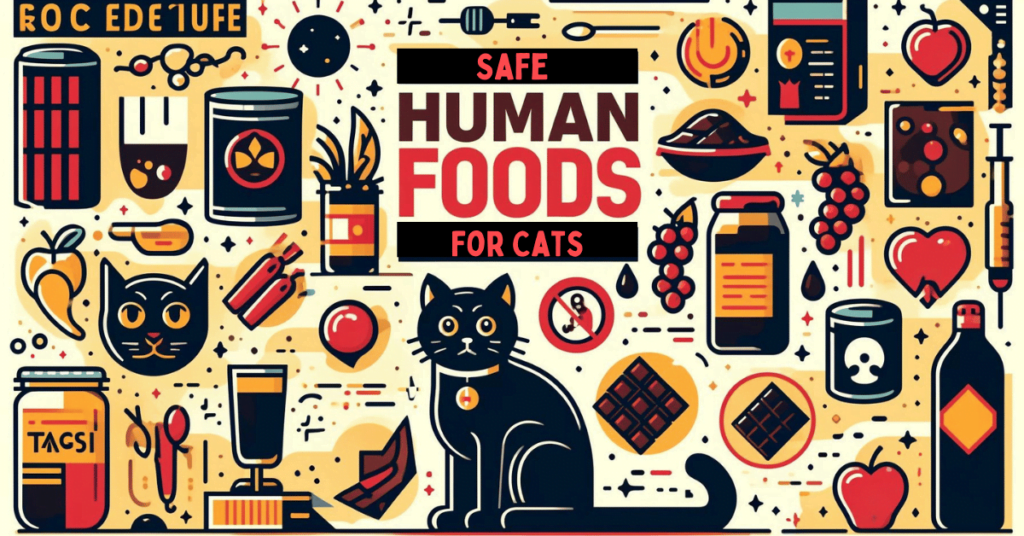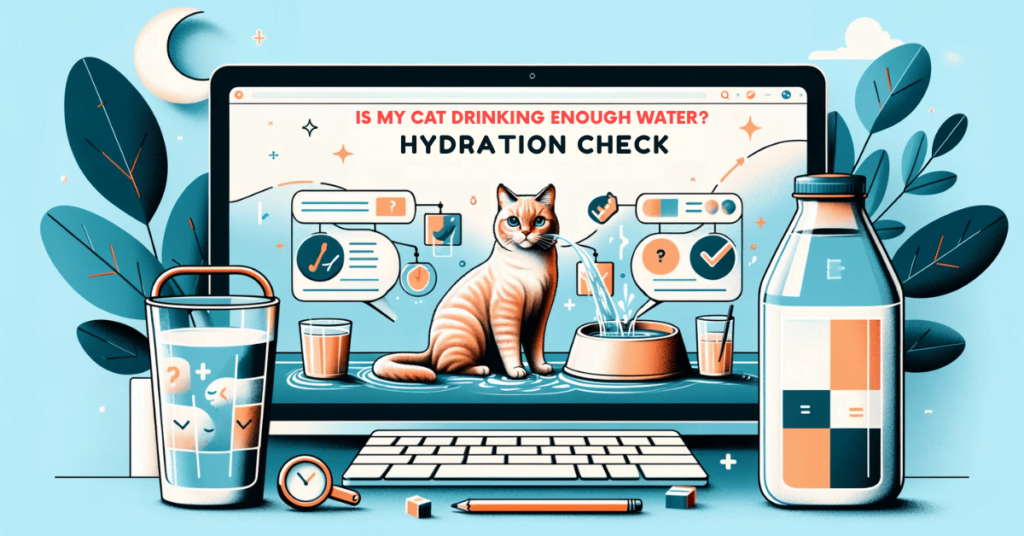This post contains affiliate links and I will be compensated if you make a purchase after clicking on my links.
Whisker-Licking Good: The Basics of Cat Cuisine
As devoted cat companions, we understand that while our furry gourmands might not ponder over their next meal with the same fervor we do, what they eat is crucial to their health and happiness.
Knowing what cats like to eat is the first step; making sure it’s healthy for them is where the true challenge lies. So, let’s dive into the culinary world of cats, where taste and health go paw in paw.
Quick Guide: What Do Cats Like to Eat?
| Food Type | Likelihood of Enjoyment | Notes |
|---|---|---|
| Chicken 🍗 | High | Cooked, no bones |
| Fish (Tuna, Salmon) 🐟 | High | Cooked, in moderation due to mercury concerns |
| Beef 🥩 | High | Cooked, lean cuts |
| Turkey 🦃 | High | Cooked, no bones |
| Duck 🦆 | Medium | Less common but often enjoyed |
| Rabbit 🐇 | Medium | A novel protein for many cats |
| Cheese 🧀 | Medium-Low | In small quantities; some cats are lactose intolerant |
| Eggs 🥚 | High | Cooked, serves as a good protein source |
| Melon 🍈 | Low-Medium | Some cats enjoy the water content |
| Cooked Vegetables (Carrots 🥕, Broccoli 🥦) | Low-Medium | Soft cooked, in small quantities |
Note: This table provides a general overview. Individual preferences can vary greatly among cats.
Why Cats Need Meat: The Science of Cats as Obligate Carnivores
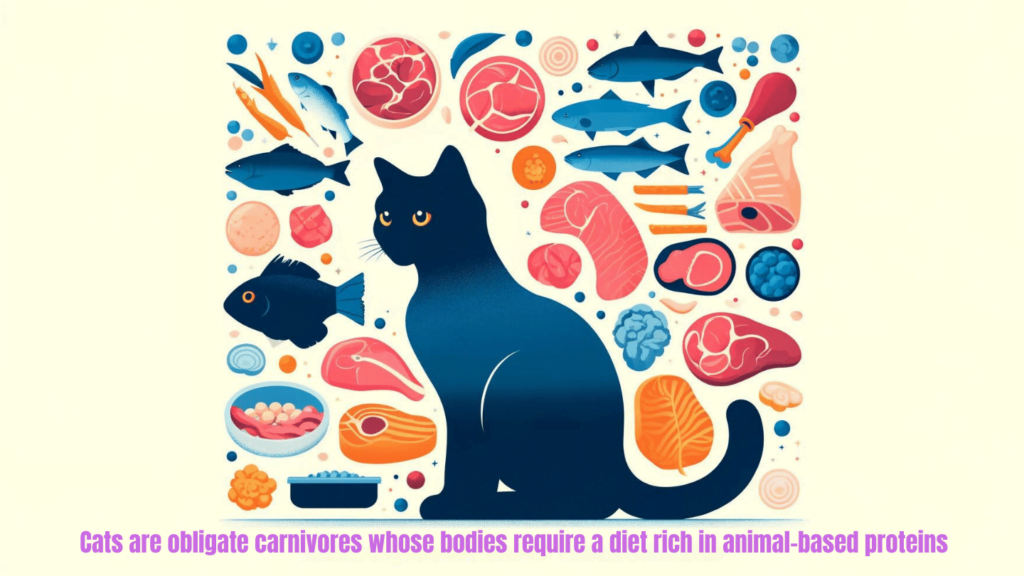
At their core, cats are obligate carnivores. This means their bodies are finely tuned machines that thrive on meat. Animal-based proteins aren’t just a preference for our whiskered friends; they’re a necessity.
Unlike us or our canine companions, cats have specific biological requirements that can only be met through a diet rich in meat. Dry kibble alone, while convenient, falls short of satisfying the complex dietary needs of cats. It often lacks the variety and animal protein content necessary for a thriving, vibrant feline. This is why diversifying their diet is not just beneficial—it’s essential.
Variety in Diet: Catering to Feline Gourmets
Imagine eating the same meal every day. Sounds pretty dull, doesn’t it? Our cats think so, too. Offering a smorgasbord of wet food, dry kibble, complements, and toppers can turn mealtime into an exciting adventure, allowing our cats to explore a world of tastes and textures.
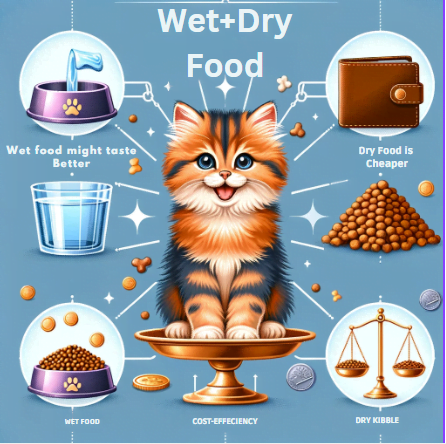
Wet food can provide the hydration they might miss out on, while the crunch of kibble can help keep their teeth clean. By integrating a variety of protein sources—such as fish, poultry, and beef—we cater to their instinctual need for a diverse diet, ensuring they receive all the essential nutrients in every bite.
To add a whisker of inspiration to your cat’s menu, consider including more specialized protein sources cats are known to love, such as duck, rabbit, and even venison. These can sometimes be found in premium cat food brands like Inaba Ciao, and Blue Buffalo, which offer recipes tailored to mimic the diversity of a natural feline diet.
Feeding Kittens for Growth: Nutritional Needs of Young Cats
The journey of a kitten’s diet is a fascinating tale that begins with the essential nourishment of mother’s milk, rich in antibodies and perfectly balanced to kickstart their growth. As they graduate to the playful explorers we adore, transitioning to solid foods becomes the next milestone.
This critical phase introduces them to a balanced diet that’s essential not just for their growth but for setting the foundation of their health and dietary preferences. Just like their adult counterparts, kittens benefit immensely from variety and exploration in their diet.
Incorporating wet and dry food options early on encourages them to embrace a range of flavors and textures, supporting their development into well-rounded feline foodies with a taste for life.
Beyond Protein: The Role of Non-Protein Ingredients
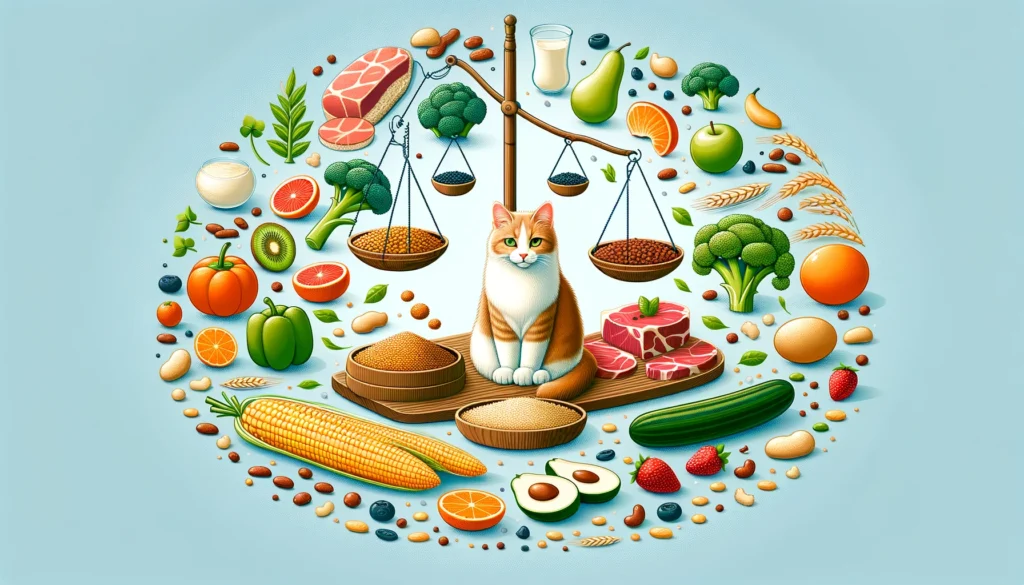
While protein reigns supreme in the feline diet, the supporting cast of non-protein ingredients plays a vital role in ensuring a balanced meal.
Grains, vegetables, and even certain fruits bring more to the table than just filler. They’re sources of essential vitamins, minerals, and fiber that contribute to digestive health, energy levels, and overall wellbeing.
Ingredients like rice, wheat flour, and dried chicory root, though less glamorous than their protein counterparts, support a well-rounded diet that complements the meaty main course. These components ensure that every meal is not just satisfying but also holistically nourishing for our purring companions.
Human Foods: The Dos and Don’ts for Feline Feasting
Venturing into the world of human foods as treats for our feline friends can feel like walking on a tightrope. On one paw, cooked eggs, small pieces of melon, and even blueberries can offer a delightful surprise, packed with nutrients and flavors they wouldn’t encounter in their regular diet.
However, it’s crucial to remember the 10% rule—these treats should only make up a tiny fraction of their daily caloric intake to avoid unbalancing their meticulously tailored diets.
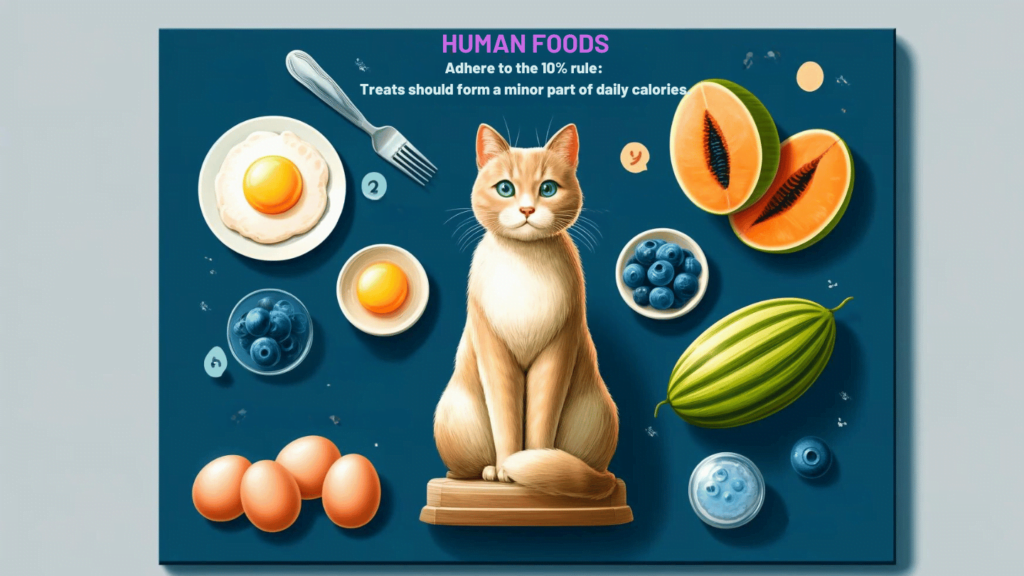
On the other paw, despite the iconic imagery of cats lapping up a bowl of milk, many of our feline friends are lactose intolerant. Introducing milk into their diet can lead to digestive upset, an unwelcome adventure for both cat and caretaker. This common misconception highlights the importance of understanding the difference between appealing and appropriate when it comes to sharing our meals with them.
Pro Tip: Beyond the occasional blueberry or melon, cats may also enjoy small portions of cooked pumpkin, steamed broccoli, or even a nibble of cheese. These can be great for adding a little variety to their diet or as low-calorie treats.
Catering to All: From Adventurous Eaters to Picky Feline Palates
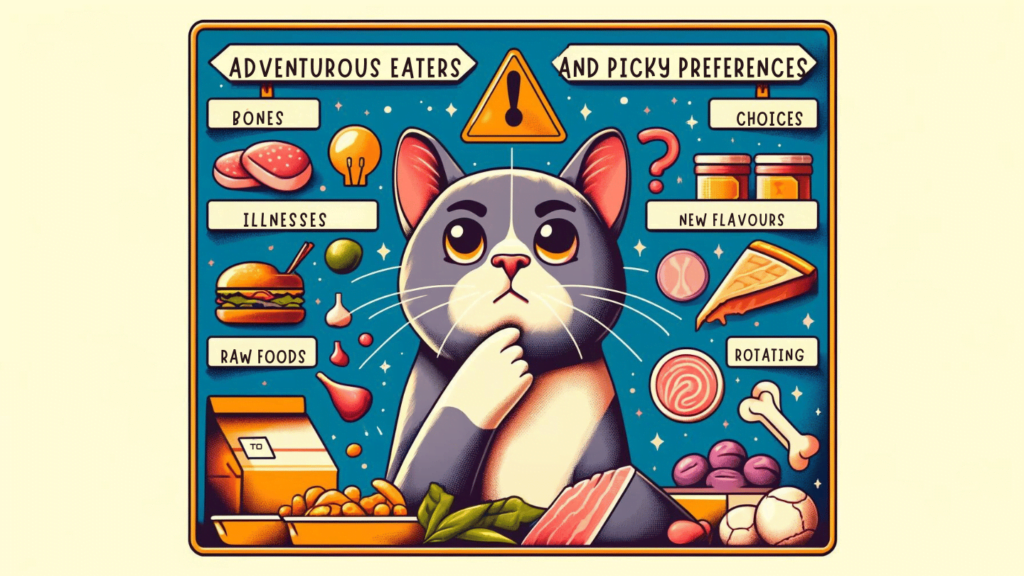
Cats, in their essence, are explorers — not just of the physical spaces around them but of the flavors and textures that their diet offers. This curiosity leads many to become adventurous eaters, keen to sample a variety of foods.
However, this adventurous spirit comes with a cautionary tail: raw foods and bones present risks, from foodborne illnesses to choking hazards. It’s imperative to ensure that their explorations into the culinary world are both safe and satisfying.
For the pickier palates, introducing variety might seem like a challenge, but it’s one worth embracing. Regularly rotating their diet to include new flavors and textures can spark interest and encourage them to broaden their dietary horizons.
Introducing New Foods to Your Cat: Tips for a Smooth Transition
When introducing your cat to new foods, start with small portions mixed into their usual food. Observe their reaction to new flavors and textures. If they’re hesitant, try different preparation methods, like blending it into a smooth paste or warming it slightly to enhance the aroma.
Finding the Right Food: A Journey of Discovery
This journey is less about finding a one-size-fits-all solution and more about tailoring the diet to each cat’s individual health needs, preferences, and even their lifestyle.
Experimentation is key, from integrating broths and creamy toppers to exploring different brands and formulations. Patience and openness in trying new feeding options can lead to discoveries that enhance your cat’s health, wellbeing, and satisfaction at mealtime.
Pro Tip: Exploring the right food for your feline can also include homemade recipes for treats. Simple, vet-approved snacks like cooked, shredded chicken, baked salmon flakes, or a small spoon of tuna in spring water can be delightful treats for your cat. These homemade options allow you to control the ingredients, ensuring they’re fresh and free from additives.
Savoring the Answer: What Do Cats Like to Eat for Optimal Health
It’s clear that finding the right balance in our cats’ diet is an art form — one that harmonizes their instinctual desires with the nutritional essentials they require for a flourishing life.
Embracing the role of a feline gastronome requires us to remain informed, observant, and endlessly creative in our approach to their dietary needs. Here’s to the health and happiness of our furry companions, one meal at a time.
Meet Sean, a fintech whiz with a penchant for pet purrs and blockchain buzz. After a decade of fintech feats, Sean’s tech talents leaped from ledger lines to litter lines, driven by a passion for pets and a vision for a more connected pet care community. With three critter companions as co-pilots, Sean launched this blog to share a treasury of pet-friendly tech tips and tales.

